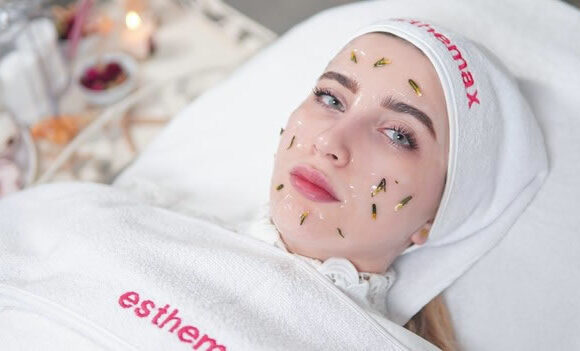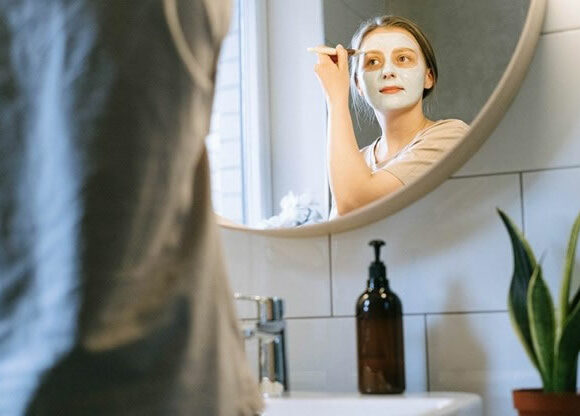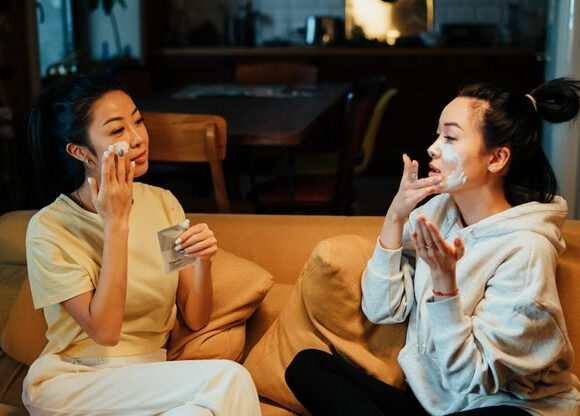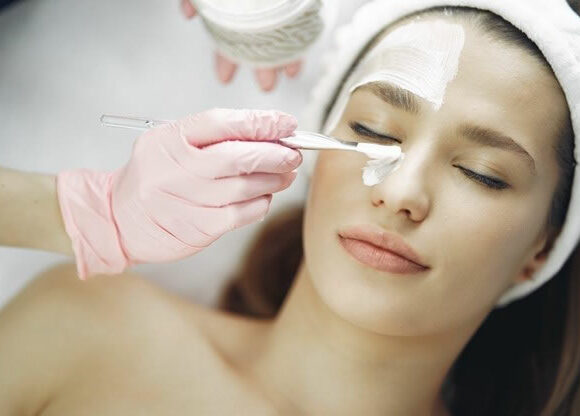Table Of Contents
- 1 Understanding Fungal Acne: Symptoms and Diagnosis
- 2 Causes and Risk Factors
- 3 DIY Fungal Acne Treatment: Natural Remedies and Best Practices
- 3.1 I. Tea Tree Oil: Powerful Antifungal Remedy for fungal infections
- 3.2 II. Apple Cider Vinegar: Natural Antimicrobial Solution
- 3.3 III. Antifungal Body Wash: Targeting Fungal Overgrowth
- 3.4 IV. Establishing a Proper Skincare Routine
- 3.5 V. Anti-Dandruff Shampoos: Versatile Treatment Options
- 3.6 VI. Aloe Vera: Soothing and Anti-Inflammatory Properties
- 3.7 VII. Salicylic Acid: Exfoliation and Pore Clearance
- 4 When to Seek Professional Help
- 5 Preventing Fungal Acne
- 6 Conclusion
Fungal acne, also known as Malassezia folliculitis or Pityrosporum folliculitis, is a common skin condition that affects numerous individuals. It arises when there is an overgrowth of yeast called Malassezia within the hair follicles, leading to inflammation and the formation of acne-like bumps.
While it may resemble regular acne, fungal acne necessitates distinct treatment approaches.
In this comprehensive guide, we will explore effective DIY solutions for treating fungal acne at home using natural remedies and implementing proper skincare practices.

Understanding Fungal Acne: Symptoms and Diagnosis
Fungal acne manifests as small, itchy, pus-filled bumps that are usually uniform in size and tend to appear on the chest, back, or face.
To accurately diagnose fungal acne, it is crucial to differentiate it from bacterial acne. One way to identify fungal acne is by observing its resistance to typical acne vulgaris treatments. [1] If you suspect fungal acne, it is advisable to consult a dermatologist for a precise diagnosis.
Causes and Risk Factors
The primary cause of fungal acne is an overgrowth of Malassezia yeasts, which naturally reside on the skin. However, several other factors can contribute to developing fungal acne and fungal infections.
These factors include a compromised immune system, excessive sebum production, wearing tight clothing that traps moisture, and in some rare physical contact with fungal cells. These conditions create an environment conducive to fungal overgrowth and increase the risk of fungal acne and fungal infections.
Furthermore, certain practices and conditions can exacerbate fungal acne. Wearing sweaty clothes for extended periods, having clogged pores due to the accumulation of dirt and dead skin cells, and experiencing skin irritation from harsh skincare products or friction can all contribute to the worsening of fungal acne and increase the likelihood of developing a fungal infection.
DIY Fungal Acne Treatment: Natural Remedies and Best Practices
To treat fungal acne, Here are some natural remedies and best practices:
I. Tea Tree Oil: Powerful Antifungal Remedy for fungal infections
Tea tree oil is well-known for its antifungal properties and has been used for centuries to treat various skin conditions.
To use tea tree oil for fungal acne, it is essential to dilute it with a carrier oil such as caprylic acid oil or squalane oil. Mix 12 drops carrier oil with 1-2 drops of tea tree oil and apply it to the affected areas using a cotton pad or clean fingers. Leave it on for 10-15 minutes, then rinse with lukewarm water. Furthermore, consider giving Desert Essence Kinder to Skin Manuka Oil & Tea Tree Oil a try for its powerful antifungal properties. This product contains both tea tree oil and manuka oil for a dual effect.
Repeat this process twice daily for optimal results. However, tea tree oil can be potent, so it is crucial to perform a patch test first and discontinue use if any adverse reactions occur.
Important!
When dealing with fungal acne, it’s crucial to be selective with the carrier oil you use. Popular oils like coconut oil, jojoba oil, rosehip oil, and argan oil can actually help fungal acne grow. [2]
It’s essential to check for potential triggers of fungal acne before applying any skincare or cosmetic products. Our fungal acne checker can help you ensure that you’re not putting your skin at risk. Take charge of your skin care regimen and stay safe by trying it out.
II. Apple Cider Vinegar: Natural Antimicrobial Solution
Apple cider vinegar is known for its antimicrobial properties, which can help control the growth of Malassezia. [3 , 4]
To use apple cider vinegar for fungal acne, mix two cups water and one tablespoon of apple cider vinegar. Dip a cotton ball into the mixture and gently apply it to the affected skin. Leave it on for a few minutes, then rinse thoroughly with water.
It is important to note that apple cider vinegar is acidic and can cause skin irritation if not properly diluted. It is advisable to start with a lower concentration of apple cider vinegar and gradually increase the amount as tolerated.

III. Antifungal Body Wash: Targeting Fungal Overgrowth
To get rid of fungal acne, use an antifungal body wash that can target the underlying fungal overgrowth. Look for body washes containing ingredients like selenium sulfide or ketoconazole, known for their antifungal properties.
Apply the body wash to the affected area during showers, gently massaging it into the skin. Leave it on for 3-5 minutes before rinsing off. Incorporate the antifungal body wash into your daily shower routine to help maintain optimal hygiene and prevent further outbreaks.
IV. Establishing a Proper Skincare Routine
Establishing a proper skincare routine is essential for managing fungal acne. Start with gentle cleansing using a mild, non-comedogenic cleanser to remove dirt, excess oil, and impurities.
Avoid harsh cleansers or scrubbing vigorously, as these can irritate the skin and worsen the condition. After cleansing, exfoliate the skin using a gentle exfoliating product or a Konjac facial sponge to remove dead skin cells and unclog pores.
Moisturize your skin with non-comedogenic products to keep it hydrated without clogging the pores. Opt for oil-free or water-based moisturizers to prevent further acne breakouts.
V. Anti-Dandruff Shampoos: Versatile Treatment Options
Anti dandruff shampoo containing active ingredients like ketoconazole or zinc pyrithione can be effective in treating fungal acne, especially on the scalp or other affected areas. Use these shampoos as body washes by applying them to the skin infection and leaving them on for at least 3-5 minutes before rinsing off.
The active ingredients in these shampoos help combat fungal growth and reduce inflammation. However, it is important to avoid contact with the eyes or mucous membranes and to follow the instructions on the shampoo bottle for safe usage.
VI. Aloe Vera: Soothing and Anti-Inflammatory Properties
Aloe Barbadensis, or aloe vera, has long been recognized for its soothing and anti-inflammatory properties. It can help alleviate the redness and irritation associated with fungal acne. [5] Apply pure aloe gel directly to the affected areas and leave it on for 15-20 minutes before rinsing off with water. Alternatively, you could consider using the Seven Minerals aloe vera leave-on product, which is made from 100% freshly-cut aloe.
Repeat this process twice a day for soothing relief. Aloe Barbadensis is generally safe for most skin types, but it is always advisable to perform a patch test first to check for any allergic reactions.
VII. Salicylic Acid: Exfoliation and Pore Clearance
Skincare products containing salicylic acid or mandelic acid can be beneficial in managing fungal acne. These acids help unclog pores, exfoliate the skin, and reduce inflammation. [6 ] Look for cleansers, toners, or spot treatments that contain mandelic or salicylic acid.
Incorporate them into your routine, using them once or twice a day, depending on your skin’s tolerance. Be cautious not to overuse exfoliants, as they may cause dryness or irritation.
When to Seek Professional Help
While DIY antifungal treatments can be effective, it is important to know when professional assistance is necessary.
If fungal acne gets worse or persists despite using at-home remedies, it is advisable to consult a dermatologist. They can prescribe topical or oral antifungal medications tailored to your specific condition and provide guidance on proper treatment.
Learn how to combat fungal acne on your back with our informative article.

Preventing Fungal Acne
To minimize the occurrence of fungal acne, it’s crucial to implement preventive measures. Follow these practices to effectively reduce fungal acne and prevent future outbreaks:
- Ensure cleanliness and dryness: Keep the affected areas clean and dry at all times. Avoid excessive sweating by taking regular showers and using gentle cleansers specifically formulated for fungal acne-prone skin.
- Choose breathable clothing: Opt for loose-fitting clothing made from breathable fabrics like cotton. These materials allow air circulation and prevent moisture buildup, creating an unfavorable environment for fungal growth.
- Select non-comedogenic products: Use non-comedogenic body lotions and skincare products that are specifically designed not to clog pores. Avoid heavy oils or greasy formulas that may block the pores and exacerbate fungal acne.
- Emphasize good hygiene: Practice good hygiene habits to minimize the risk of spreading fungal cells. Avoid sharing personal items such as towels, clothing, or makeup brushes, as they can harbor fungal organisms and transfer them to the skin.
- Maintain a balanced diet: A compromised immune system can contribute to fungal overgrowth, so it’s essential to maintain a balanced diet rich in essential nutrients. Incorporate a variety of whole grains, fruits, lean proteins, and vegetables to support overall immune health.

Conclusion
Fungal acne, although bothersome, can be effectively treated at home using alternative remedies and implementing proper skincare practices.
By understanding the causes, symptoms, and risk factors associated with fungal acne, you can take proactive measures to address the condition. However, if the condition persists or worsens, seeking professional assistance is crucial.
Remember, with the right knowledge and treatment; fungal acne can be effectively managed, allowing you to regain clear and healthy skin.
Moreover, you should also read our previous article about itchy acne and what it could mean.
- L. Saunte, D. M., Gaitanis, G., & Hay, R. J. (2019). Malassezia-Associated Skin Diseases, the Use of Diagnostics and Treatment. Frontiers in Cellular and Infection Microbiology, 10. https://doi.org/10.3389/fcimb.2020.00112
- Rubenstein, R. M., & Malerich, S. A. (2014). Malassezia (Pityrosporum) Folliculitis. The Journal of Clinical and Aesthetic Dermatology, 7(3), 37-41. https://www.ncbi.nlm.nih.gov/pmc/articles/PMC3970831
- Barak-Shinar, D., Río, R. D., & Green, L. J. (2017). Treatment of Seborrheic Dermatitis Using a Novel Herbal-based Cream. The Journal of Clinical and Aesthetic Dermatology, 10(4), 17-23. https://www.ncbi.nlm.nih.gov/pmc/articles/PMC5404776
- Ousaaid, D., Laaroussi, H., Bakour, M., Ennaji, H., Lyoussi, B., & Arabi, I. E. (2020). Antifungal and Antibacterial Activities of Apple Vinegar of Different Cultivars. International Journal of Microbiology, 2021. https://doi.org/10.1155/2021/6087671
- PV Parvati Sai Arun, Yaralagadda Vineetha, Maseera Waheed, Koka Ravikanth, “Quantification of the minimum amount of lemon juice and apple cider vinegar required for the growth inhibition of dandruff causing fungi Malassezia furfur,” International Journal of Scientific Research in Biological Sciences, Vol.6, Issue.2, pp.144-147, 2019.
- Vest BE, Krauland K. Malassezia Furfur. [Updated 2023 May 22]. In: StatPearls [Internet]. Treasure Island (FL): StatPearls Publishing; 2023 Jan-. Available from: https://www.ncbi.nlm.nih.gov/books/NBK553091/
More Content
- Sebaceous Hyperplasia treatment at home
- Hormonal Acne Vs Fungal Acne: What’s The Difference?
- Retinol for Fungal Acne
- Anti-fungal Creams for Face
- Fungal Acne Safe Products You Can Add To Your Skin Routine
- The Best Fungal Acne Safe Foundation For Your Skin
- Is Benzoyl Peroxide Good for Fungal Acne?
- Fungal Acne-Safe Makeup Products to Achieve Smoother Skin
- Malezia Skincare: A Game-changer for Fungal Acne
